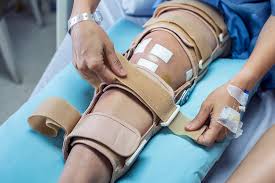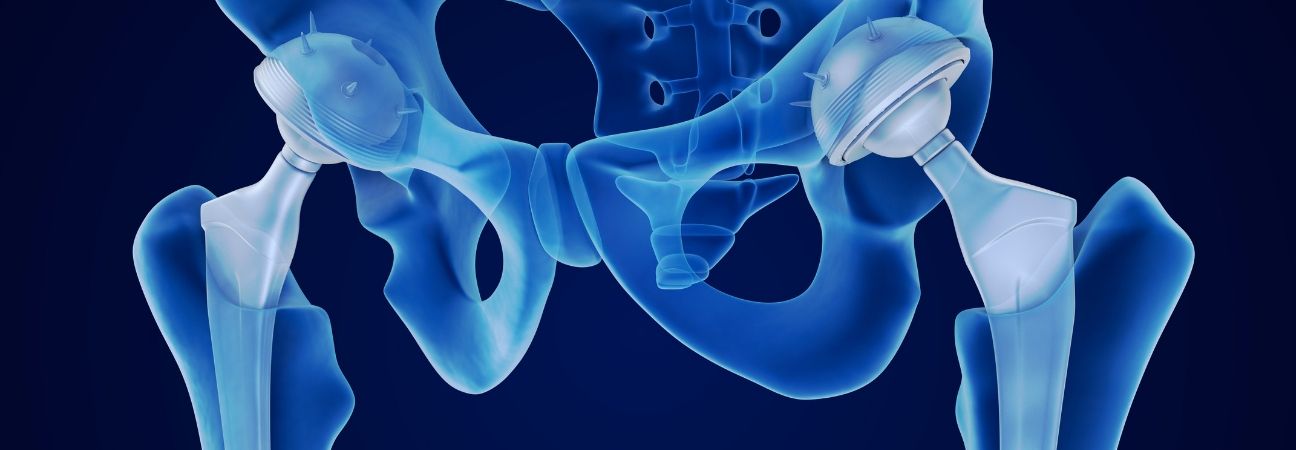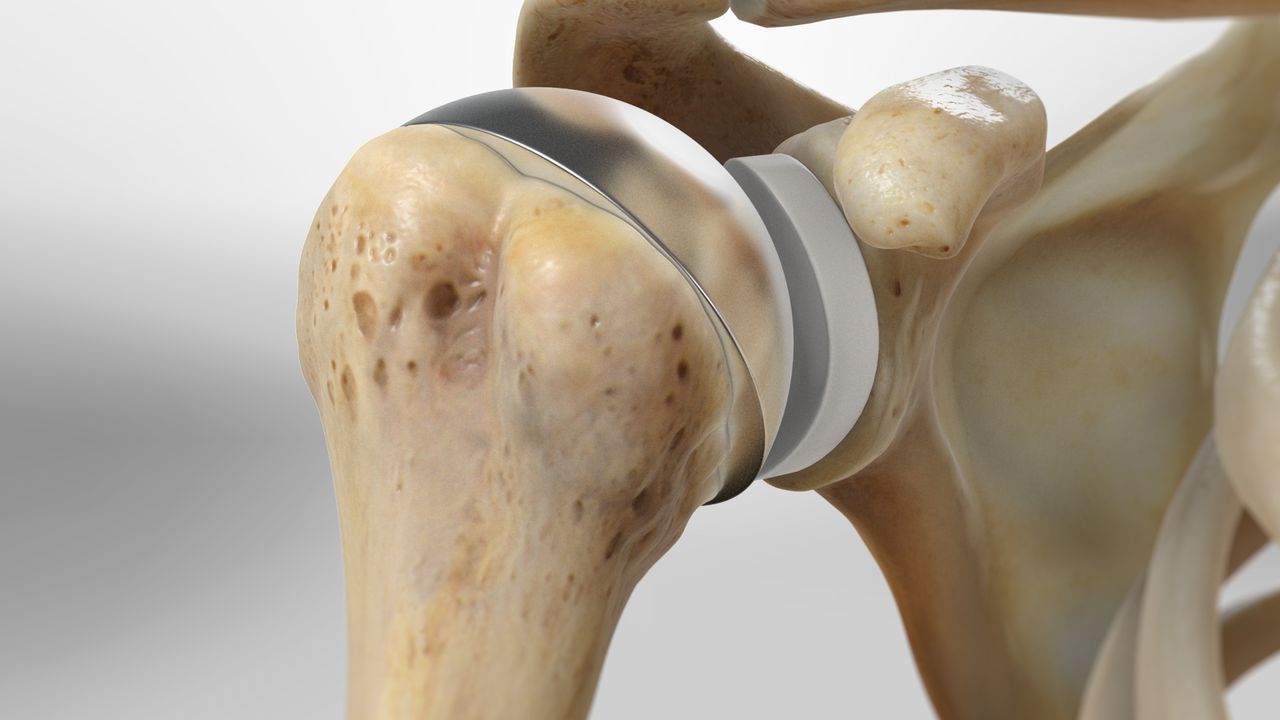Knee joint consists of a joint between lower end of thigh bone (Femur) and upper end of shin bone (Tibia). The knee cap (patella) also makes a joint with the lower end of thigh bone and is called patello-femoral joint. The surfaces of joints are covered with thin shiny white layer of cartilage which is lubricated by the joint fluid which helps in smooth and pain-free motion at joints. Damage to this shiny layer of cartilage leads to irregularity of the joint surface which cause pain and with time results in permanent irregularity of the joint surface resulting in decreased joint motion, paining and crackling sound while moving the joint. Early stages can be managed with pain relieving medications, weight reduction, and exercises to strengthen the muscles around knee joint. In advanced cases there is permanent loss of motion and development of lower limb deformities. Once the pain is significant resulting in limitation of daily routine activities like walking, climbing stairs, sitting cross leg along with development of deformities, knee replacement can be done to regain the pain-free motion. It is a safe and effective treatment to get rid of pain and disability. Knee replacement can be done for whole of the joint (Total Knee replacement) or some part of the joint (Partial Knee replacement).

Knee replacement is done under regional ( where only your lower limbs are numb and you are awake) or General Anaesthesia ( where you are made to fall asleep till the surgery is complete ) which will be decided by the Anaesthesiologist depending on your current health condition . A tight pneumatic bandage (tourniquet) is applied to your thigh so as to stop bleeding during surgery. A 15-20cm incision is given over the centre of knee and the joint surfaces are exposed. The extra bony overgrowths (Osteophytes) are excised. The damaged joint surfaces are removed and the deformity is corrected so as to obtain near normal limb alignment. New joint surfaces are created using metal bearing surfaces one for the lower end of thigh bone ( femoral Component ) and one for the upper end of shin bone ( Tibial Component ) with a piece of plastic insert ( Highly cross linked polyethylene ) is inserted between the tibial and femoral component. A cement is used to fix these implants to the bone surfaces. The new joint is thus created between the femoral component and plastic insert provides pain-free movements at knee joint. Patello-femoral joint replacement depends on the damaged to patellar joint surface. At Orthoexcellence the patellar replacement is done less often. Finally the joint motion and alignment is checked and surgical field is washed with sterile fluid and sutured using absorbable sutures. At Orthoexcellence we also offer suture less knee replacement. A plastic tube may be placed in the knee joint to remove the blood collection in knee joint. A compression bandage is applied and knee placed in a long knee brace to keep the limb straight. The tourniquet is deflated. Once you are awake you will be shifted to recovery room.
After total knee replacement you will be given antibiotics, pain medications and ice packs for few days. Wound dressings will be required till all the sutures are removed. A long knee brace is to be worn for 4 to 6 weeks after surgery. Walking is allowed to all the patients after 48 hours only with walker till the patient regains muscle strength and power in the lower limb. Walking with stick can be stated as early as possible and as and when you are comfortable with it. Almost all patients are discharged after 5 to 7 days after surgery depending upon the recovery. Bathing is only allowed after suture removal. Rehabilitation begins immediately after surgery and an aggressive Orthoexcellence rehab protocol followed and advised to every patient which is followed till the patient regains muscle strength and knee motion while at home.
Knee replacement is a major surgery and as with any major surgery it also has complications and risks as mentioned below:-
The content, information, opinions, viewpoints and advice contained herein is solely provided to promote patient education. It doesn’t replace the advice of your qualified doctor or health-care professional. Orthoexcellence team makes every effort to provide accurate knowledge to the patients but cannot provide guarantee as to the completeness and accuracy of the information provided in this website.
The Hip joint is the largest weight bearing ball and socket joint between upper end of thigh bone (Femoral head) and the pelvic bone (Acetabulum). It is surrounded by thick layers of muscles, tendons and ligaments. Any damage to hip joint will lead to pain and limited ability to walk and weight bearing. Being a weight bearing joint Damage to hip joint can occur due to wear and tear, trauma, sports injuries, infections and some degenerative diseases. Hip pain is usually experienced in the groin area or it may be referred to knee joint without having groin pain at all. In Advanced cases you will have limitation in sitting cross leg squatting or even difficulty to sit on chair due to bony fixation of thigh bone with the pelvic bone. Your affected limb may appear shortened or lengthened on physical examination. After taking thorough history of your symptoms a clinical examination will be performed to find out the severity of pain, degrees of lost motion at hip joint. a. Various clinical test will be performed for quantification of deformities, limb length discrepancies if any. After this X-rays of hip joint will be done to see the status of hip joint. Sometimes an MRI or CT scan of hip is also needed to help in diagnosis and planing of your surgery.

Hip replacement is surgical procedure where the old damaged joint surfaces are removed and replaced with new artificial metal on metal or metal on plastic surfaces. Total Hip replacement can be done under regional ( where only your lower limbs are numb and you are awake) or General Anaesthesia ( where you are made to fall asleep till the surgery is complete ) one of these methods which is best for you will be decided by the Anaesthesiologist depending on your current health condition. You will be made to lie on operation table with the diseased hip upside. An incision will be given over the side of your upper thigh to expose the hip joint. The diseased part of the joint surface will be removed using saws and reaming instruments and a new joint will be created using the metal implants (femoral stem and head for thigh bone and acetabular shell and plastic liner for pelvic bone) in correct position. A metallic or ceramic ball and a plastic liner make the new bearing surface. Stem and shell can be fixed to your bone with or without cement depending upon the quality of your bone. Stability of the new joint is checked by moving your limb through full range of motion. Correction of Limb length is also checked. Once the surgeon is satisfied with the correct positioning and stability of hip joint the wound is washed with sterile fluid bleeding is controlled and incision is closed with or without a plastic tube left inside the joint to drain of excessive blood. A sterile bandage is applied over the incision and you are shifted to recovery room.
The shoulder is the most flexible joint in the human body enabling a wide range or movements including forward flexion, abduction, internal and external rotation and 360 degrees of circumduction. Muscles, tendons and ligaments around this joint provide it a necessary stability during this motion. It consists of a joint between upper end of arm bone (Humerus head) and outer part of scapular blade (Glenoid). Both surfaces are covered with highly smooth cartilage lubricated by a fluid which prevents friction between the two. Damage to this white cartilage leads to pain and reduced motion at shoulder joint due to rubbing of bones with each other. Early cases with mild damage can be managed with pain medication, physiotherapy but severe pain during routine activities, resting pain and reduced shoulder motion need joint replacement. Shoulder joint replacement is usually performed to get rid of pain and improve joint motion. Common conditions requiring replacement are osteoarthritis, rheumatoid arthritis and severe fractures of humeral head.

The surgery is done under General Anaesthesia ( where you are made to fall asleep till the surgery is complete ) once you are declared fit for surgery as decided by the anaesthesiologist depending on your current health condition. You will be made to lie on operation table either supine or in a beach chair position. A large incision or minimally invasive, will be given over the front of your shoulder to expose and separate the joint. The shoulder joint can be partially or fully replaced. In total shoulder replacement diseased part of the joint surface will be removed using reaming instruments to hollow out the arm bone and a new joint will be created using the metal implants. The stem will be fixed to your bone with cement whereas a small plastic glenoid socket is firmly fitted in the scapular bone. Whereas in partial replacement only the humeral head is replaced while the glenoid is used as such to make the joint. Once the surgeon is satisfied with the correct positioning and stability of joint the wound is washed with sterile fluid, bleeding is controlled and incision is closed with or without a plastic tube left inside the joint to drain of excessive blood. A sterile bandage is applied over the incision and you are shifted to recovery room.
In the post-operative period you will be given antibiotics and pain medicines for some days. An arm sling is given to give rest and support to the arm. All patients are allowed walking as and when they feel comfortable. Most patients are discharged 5-7 days after surgery. Bathing is only allowed after suture removal usually 12thpost-operative day. Rehabilitation in the form of physical therapy will begins immediately after surgery and an aggressive Orthoexcellence rehab protocol is followed and advised to every patient which is followed till the patient regains muscle strength and full motion while at home. You should be able to perform daily activities after 4-6 weeks after surgery
Shoulder replacement is a major surgery and as with any major surgery it also has complications and risks as mentioned below:-